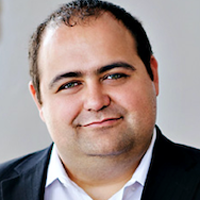
Broadcasters Tackle Election Challenge With Tech

The COVID-19 pandemic has already made 2020 a year of unprecedented change for the television news business, as broadcasters rapidly shifted in March to remote production techniques and cloud-based workflows to maintain their coverage. Major change is extending through this year’s election cycle, which has already seen virtual political conventions for the first time, a scarcity of in-person campaign events and now the new uncertainty of widespread mail-in voting.
As the mostly-virtual campaigns march toward Election Day this fall, broadcasters are balancing their coverage against the backdrop of other huge ongoing stories such as the government response to COVID-19, protests against social injustice, the wildfires ravaging the West and the prolific development of hurricanes in the Atlantic. And all of these stories need to be covered while adhering to the stringent social-distancing requirements that keep journalists safe.
Broadcasters plan to rely heavily on IP contribution, cloud editing systems and other remote production tools that have made news coverage possible through the pandemic, while maintaining a reduced number of in-house staff and continuing to prioritize safety in their field coverage and travel plans. And they are settling in for the long haul, as many expect final voting results won’t be confirmed for days, if not weeks, past Nov. 3.
“This is going to be one huge story that will keep going no matter how this turns out,” said Alan Komisaroff, VP of news for Fox News Channel (FNC).

Alan Komisaroff
Komisaroff, who joined other broadcast news experts last week for the TVNewsCheck Webinar “Elections 2020: Technology & Storytelling in an Unusual Year,” notes that in 2016 six million viewers tuned into to watch Hillary Clinton’s concession speech the day after the election, showing that the audience’s appetite for news doesn’t end on election night.
“We always knew the next day after this election is going to be a huge day, whether it’s settled or whether it’s not,” he said.
Graham Media Group CTO Anthony Plosz is hopeful that a presidential winner can be declared by Thanksgiving. As for election night, Graham’s news directors are prepared for a long night, and are expecting to extend live coverage to between 2 and 3 a.m., ending only an hour before many stations start their morning newscasts.

Anthony Plosz
“Probably the best observation made by our news directors was that this election was going to be a lot like 2000, except mail-in ballots are the new hanging chad,” Plosz said.
He added that about 20%-30% of staffers at Graham stations are currently coming to the building each day, and that includes photographers who briefly visit the station to grab their vehicles and gear. Most newsroom staff are working from home, including senior producers, producers and directors who are coding most of their shows from home and then coming into the station just to run newscasts from the control room.
Fox News Channel’s senior producers and executive producers, who regularly work in the control rooms, are still coming to the cable network’s New York headquarters, but many support staff are working remotely. Personnel who are in the building are practicing social distancing and wearing masks when traveling the hallways and common areas.
FNC will spread its election-night production across several control rooms to ensure adequate spacing, with only essential staff present. “Producers kind of need to be in the control room,” Komisaroff said.
IP transmission provider Dejero has seen a dramatic increase in its mobile app usage — a seven-fold rise from April to August 2020 compared to the same time last year — and a higher number of mobile contribution units being used due to the COVID-19 pandemic, including its new EnGo 260 mobile transmitters that can run on battery power for up to 10 hours.

Bogdan Frusina
Dejero has seen a slight reduction in cellular data usage for its bonded transmission systems but an overall increase in network traffic. That’s because many journalists are tying the Dejero systems to their home broadband connections to feed content, said Bogdan Frusina, Dejero’s co-founder and chief strategy and innovation officer.
“We’re seeing a significant increase in our mobile units themselves that are being used at home, and a lot more working from home,” said Frusina, who noted that usage patterns in August suggested that more journalists have recently been returning to the office.
“Much less” than 50% of news staffers among Dalet’s customers have returned to the facility as of now, according to Stephane Guez, co-founder and CTO of the content management and newsroom system vendor, who said the number for most broadcasters remains around 25%. But he noted that customers have adapted through the use of IP technology and really haven’t missed a beat when working remotely.

Stephane Guez
“What is amazing, there have been some difficulties, but overall people been able to do that,” Guez said. “Today, even though the situation is improving, people continue to work as much as possible from home, or reporting from the field, and the technology has allowed that.”
Dalet has seen a big increase in the use of its mobile apps as well as tools like AI-assisted transcribing. Many broadcasters have also been doing cloud-supported editing through Dalet’s newsroom system, which allows producers and editors to work with proxy video in the field and then render in full resolution using hardware based at the station.
Komisaroff said FNC has been heavily reliant on cloud-based editing, and he has been impressed with the quality level the network has been able to maintain. For his part, Plosz said that Graham has been using high-performance remote desktop access to station-based systems and is currently exploring proof-of-concepts for fully cloud-based editing.
Field coverage has seen fewer big changes given COVID-19, though Komissaroff said “the bar is definitely higher for all news stories” when FNC is deciding whether a story merits sending reporters out in the field. But despite that, he says FNC has matched what it’s done in previous election cycles.
“There hasn’t been an event that Vice President Biden has done that we haven’t been at, and there hasn’t been an event that the president has done that we haven’t been at,” Komissaroff said. “There are probably [fewer] events to cover because of what’s going on, so that has helped. But we definitely have the same amount of people out. We’re just being a little pickier about what we need to cover.”
For example, FNC has had journalists covering the Western wildfires for the past two weeks as well as in the Southeast covering several active tropical storms.
“We’re definitely spreading out more and sending people out separately and making sure everybody has their own car, things like that, to try to keep people safe,” he said. “But I would say the amount of journalists we’re sending out is the same.”
To that point, Komissaroff said that last Thursday FNC had live reporters in eight different places, despite social-distancing and PPE requirements. It is making abundant use of backpack IP contribution systems like LiveU, though it still sends satellite trucks out to events where it is concerned about spotty coverage.
Travel remains a big issue, and FNC always aims to send news personnel in separate cars, a big change from the days of sending a satellite truck and four people in one car. Now it’s one person driving the truck and four separate cars with one person each. Flying is still avoided whenever possible.
“We’re more careful in how we do it and we’re selective in the places we do go to,” Komissaroff said.
Graham also has about the same number of people in the field and the same number of news vehicles as it did pre-COVID. The stations are heavily reliant on bonded cellular contribution, but that has been the case for several years, Plosz said. Some stations use IP links over 90% of the time, and Graham’s digital team has even developed a custom app that allows reporters to stream directly from their smartphones using standard LTE connectivity.
“Over the years, the dedicated microwave trucks have become less and less,” Plosz said. “Then come election season, microwave is better suited and deployed toward gatherings or fixed events. Otherwise, the vast majority is all coming in IP via bonded cellular or remote studios that we’ve set up with dedicated encoders.”
News directors at the Graham stations are talking to local candidates to try to figure out what events are actually going to happen this fall and how stations can cover them safely.
“There are still so many unknowns,” Plosz said. “It’s going to be a lot of adjustment on the fly.”
Election-night coverage will mean slightly more people in the newsroom than Graham is using for day-to-day coverage now, but still “significantly less” compared to previous cycles. Because there are fewer people in the facility, Graham stations will be able to spread out staffers across unused offices and easily maintain more than six feet of social distancing.
“It’s going to be interesting,” Plosz said. “Because as these elections go late into the night, keeping the staff fresh and making sure everybody is staying safe and healthy is going to be a big priority.”
Donald Trump’s victory in the 2016 presidential election was a surprise to many because most polls showed Hillary Clinton to have a solid lead up to election night. In response to that, FNC developed its own polling tool, “Fox News Voter Analysis,” which it began using with the 2018 congressional elections.
That system took into account mail-in voting for that cycle, Komisaroff said, and successfully predicted many House of Representatives races early. The volume of mail-in voting in 2020 will obviously be significantly higher, which FNC aims to highlight with its touchscreen and on-screen graphics systems.
“We’re definitely dedicated a little more space to advanced voting on a whole,” Komisaroff said. “How much advanced voting has gone on before, and what the rules are for individual states in how they deal with mail-in voting: are they counting the day of; beforehand; how many days after election day can they count ballots, things like that.”
Executives from Fox News and Graham Media say they’ll rely heavily on IP contribution, cloud editing systems and other remote production tools in their coverage of the 2020 election, and they’re also ready to settle in for the long… Click To Tweet































Comments (0)